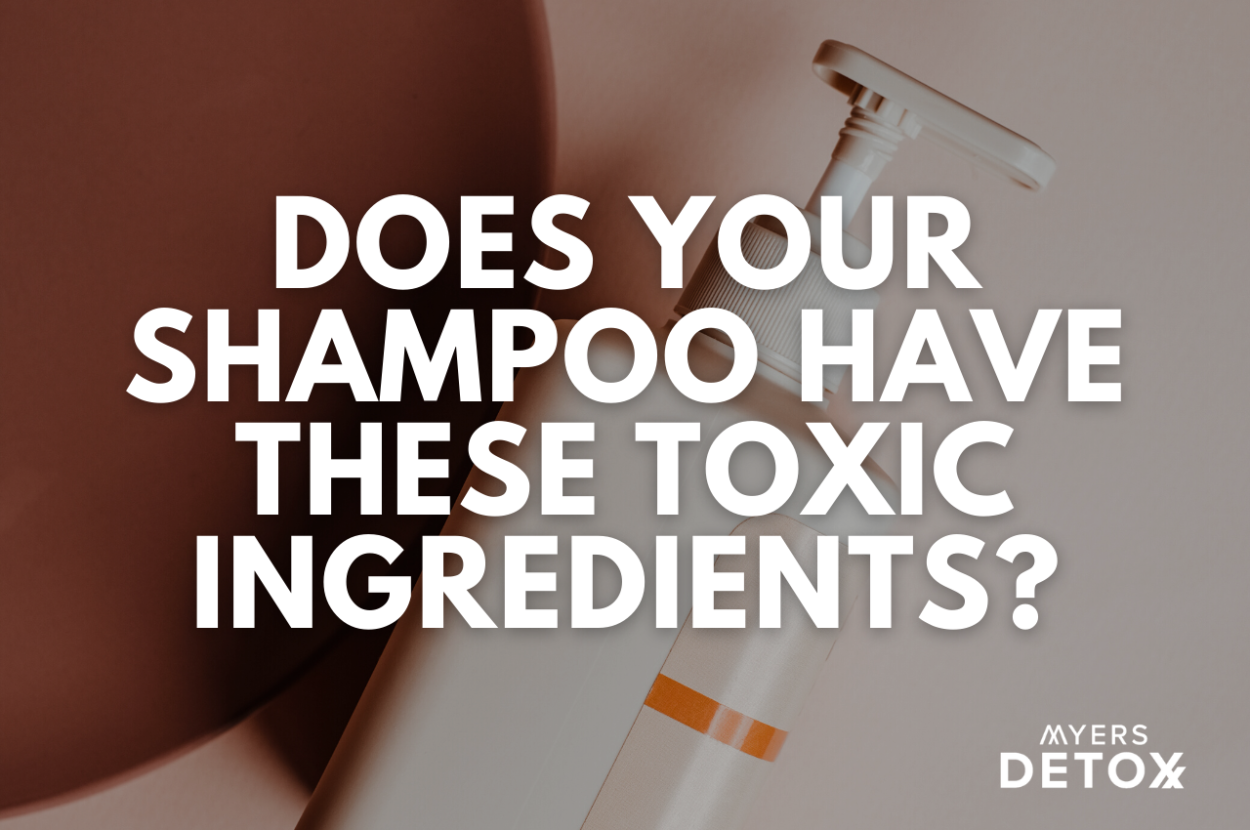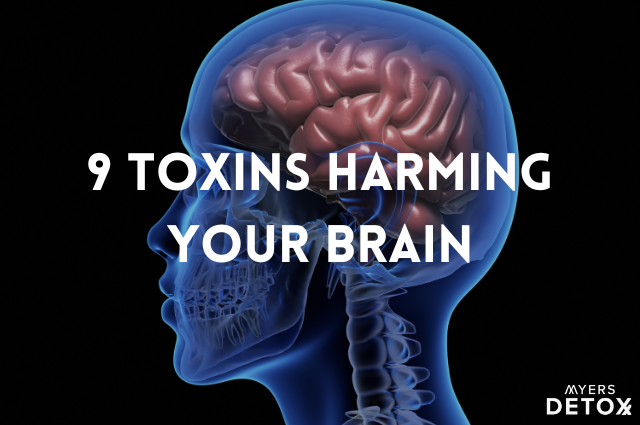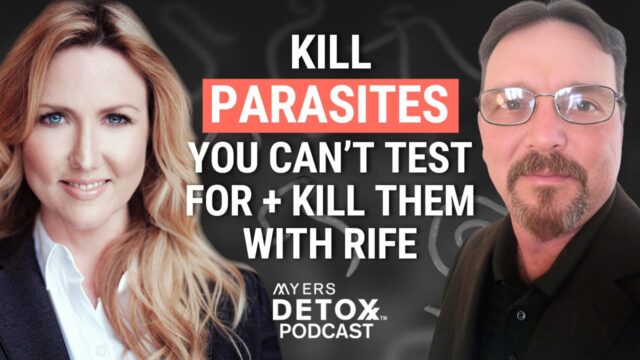Keeping an eye on the ingredients in your personal care products is just as important as checking the labels on your food. Unfortunately, even the most aware consumer may miss the fact that products like shampoo and conditioner are loaded with toxic compounds that can be absorbed right through your skin.
In this article, you’ll learn about:
- The three most toxic ingredients that are lurking in your shampoo
- How your shampoo may be behind hormonal imbalances and even fertility issues
- Why your shampoo may be carcinogenic, and which ingredients to avoid
- My top picks for safer, healthier options
Three Ingredients To Avoid In Shampoo
Several potentially toxic compounds can be found in your beauty products. However, when it comes to shampoo, there are three chemicals that many manufacturers add which pose threats to your health. These include sulfates, parabens, and phthalates.
Sulfates
Sulfates are primarily added to your shampoo for their ability to produce a rich lather. In addition, they act as surfactants (surface-active agents), which help break surface tension and lift impurities like dirt and oil from your hair and other surfaces.
Sulfates often come under the name sodium lauryl sulfate (SLS) or sodium Laureth sulfate (SLES). Sodium lauryl sulfate produces a compound called nitrosamine, which is a known carcinogen. In addition to its potential link to cancer, nitrosamine is also associated with endocrine disruption, which leads to imbalanced hormones. Furthermore, there is concern around organ system toxicity as nitrosamine seems to accumulate in the liver.
Unfortunately, nitrosamine is easily absorbed through your skin, so even small amounts of exposure could be harmful[1][2].
Sodium Laureth Sulfate produces a byproduct called 1,4-dioxane. 1,4-dioxane is another known carcinogen and is also linked to organ system toxicity. Similar to nitrosamine, 1,4-dioxane easily penetrates the skin and enters your circulation. The EPA (environmental protection agency) considers 1,4-dioxane a probable human carcinogen, and it is known to be cancer-causing for animals[3].
Parabens
Parabens stop the growth of microbes, so they’re commonly found in shampoos as preservatives. In fact, they’re used in a wide range of personal care products, including conditioners, lotions, cleansers, and scrubs[4].
The most well-researched concern regarding parabens is endocrine disruption due to their ability to mimic estrogen. Cell cultures show that parabens can dock on estrogen receptors and at sufficient concentrations may increase the risk for breast cancer. What’s more, parabens seem to block androgen hormones (male sex hormones) and inhibit enzymes that are needed to metabolize estrogen[5].
Aside from breast cancer, research shows that paraben exposure may reduce sperm production, reduce testosterone levels, alter the development of reproductive organs, and could potentially cause anxiety and behavioral changes[6][7][8].
Parabens have also been linked to skin cancer. Some research shows that the application of personal care products that contain parabens is associated with UV damage of skin cells and disruption in cellular growth[9].
Phthalates
Phthalates are typically added to shampoo to assist with the fragrance. In fact, many companies use the loophole of simply labeling phthalates under “fragrance” instead of using the chemical name. Therefore, if you see the word “fragrance” on your shampoo bottle, there’s a good chance that you’re looking at a product that includes phthalates[10].
There are several health concerns associated with phthalates, which is why they are banned from cosmetics in the EU. Unfortunately, you can still find phthalates in products manufactured in the United States[11].
Women who are pregnant or are trying to get pregnant should take extra caution with phthalates as there is an associated with exposure to this chemical and congenital abnormalities. The European Chemicals Agency classifies phthalates as reproductive toxicants due to their ability to disturb hormones and decrease sperm count and fertility in men[12].
What’s more, animal research suggests that phthalates are likely carcinogenic, specifically when it comes to breast cancer due to estrogenic effects[13].
To learn more about toxic ingredients in your haircare products, check out this article.
Safe and Effective Shampoo Ingredients
Although the world of shampoo is riddled with toxic ingredients, several companies have stepped up and created products that are safe, healthy, and effective. Many of these companies use ingredients that promote healthy hair and leave no toxic traces in your body. Some of the best ingredients to look for in your shampoo include:
Tea Tree Oil
Tea tree oil comes from a small tree native to Australia, and it happens to be one of the most effective treatments for dandruff. In fact, research shows that formulations that include just 5% of tea tree oil can improve itchiness, greasiness, and dandruff on the scalp[14].
Argan Oil
Argan oil comes from the argan tree native to Morocco. This oil has become increasingly popular for hair health due to its nutrient density. Specifically, argan oil can help to revive and strengthen damaged hair. Argan oil is particularly rich in vitamin E, which is helpful for skin and hair health[15].
Pumpkin Seed Oil
Pumpkin seed oil is a popular ingredient that can be added to shampoos to promote hair growth. Research into pumpkin seed oil for hair growth has been primarily conducted with people taking oral supplements. However, the oil can penetrate your scalp, which means there’s good reason to believe it would be helpful in a shampoo format as well[16].
Aloe Vera
Aloe vera gel is used for all kinds of skin ailments, and due to its nutrient density, can also support healthy hair. Research shows that the nourishing effects of aloe vera support the health of your scalp, potentially reducing dandruff and dryness while also promoting hair growth. It appears that the enzymes in aloe vera are able to protect your scalp against imbalances, and therefore help to protect against hair loss[17].
Top Picks For Natural Shampoo
I’m always on the lookout for natural personal care products that are free of harmful chemicals and unwanted ingredients. Below are my top picks for natural shampoo:
Wellnesse Wellness Mama
Wellnesse is the brainchild of Katie Wells, founder of Wellness Mama, one of the most popular blogs for toxin-free DIY recipes. To make your life a little easier, Katie developed a line of products called Wellnesse, which includes shampoo that’s GMO-free, paraben-free, and sulfate-free. She also has a 30-day guarantee, so if the product doesn’t work for you, just send it back for a full refund. Check out her cleansing shampoo or dry shampoo.
Beauty Counter
Beauty Counter is a fantastic company that offers a line of personal care products ranging from makeup to anti-aging to haircare. They consistently rate as one of the cleanest brands on the EWG Skin Deep Database (from the Environmental Working Group), and their products are highly effective. Check out Beauty Counters daily shampoo for a clean and simple option.
Acure Organics
Acure Organics is a personal care line that prides itself on sourcing only the highest quality ingredients. What’s more, all of their products are always free of parabens, sulfates, formaldehyde, paraffin, and mineral oils. They offer a range of shampoo and conditioner options, including volumizing, cleansing, hydrating, balancing, and more. Check out their full line of shampoos to see which option is right for you.
Primal Life Organics
Primal Life Organics has a great shampoo bar that is a shampoo and conditioner in one. It has all-natural, protective emollients like organic oils of palm, coconut oil, olive oil, and shea butter, so it won’t dry out your scalp or strip your hair of its natural oils. And of course, it’s free of chemicals, sulfates, silicone, and parabens.
Takeaway
If you’re like most people, you’ve found a shampoo and conditioner that works for you, and you’re loyal to your brands. But, unfortunately, if that loyalty is to a brand that uses sulfates, parabens, and phthalates, then you might be in trouble.
If you take care to eat food that’s non-toxic, then it only makes sense that your personal care products should be free of toxins as well. Always check ingredient labels and be sure to steer clear of the big three mentioned in this article.
To make your life a little easier, you check out some of my recommendations above, which all get my stamp of approval.










